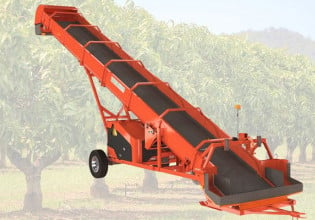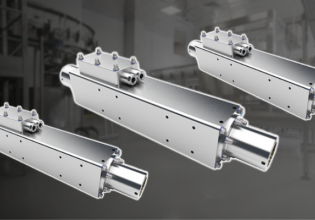Challenges and Best Practices Implementing Industrial IoT Solutions
As the IIoT continues to grow in the industrial sector, businesses face a number of obstacles to integrating its solutions. Learn about these challenges as well as some potential solutions.
See our previous articles covering the IoT and cloud:
Cloud Computing and the Industrial Internet of Things
IoT Software Distribution Models: Cloud Based and On Premises
Components of the Industrial Internet of Things
According to PR Newswire, the global market value of the Industrial Internet of Things (IIoT) was 72 billion USD in 2021 and is expected to grow to 102 billion USD by 2028. With this increased market value, there is no question that the IIoT is here to stay, along with Industry 4.0. Even considering these optimistic growth projections, however, the IIoT is barely scratching the surface of the industrial sector.
In a previous article, we discussed the architecture and components of the IIoT. Let's now review some of the challenges to introducing IIoT that industrial and manufacturing businesses face today.

Figure 1. Despite the growing popularity of the IIoT, manufacturers still have concerns about the potential challenges of integrating IIoT technology into their businesses. Image used courtesy of Canva
IIoT Challenges
IIoT and Industry 4.0 are two concepts heavily marketed by automation companies worldwide. Potential customers from the industrial sector need to understand the complexities and risks of IIoT before embarking on a full-scale deployment and incurring unnecessary costs.
Data and Infrastructure Security
Security is the first concern that comes to mind when hearing the words ‘field devices’ and ‘internet connectivity’ in the same sentence. These field devices have traditionally worked in silos—making them accessible over the internet is a paradigm shift.
The true challenge beyond changing the customer's perception, however, is to effectively maintain the information and industrial infrastructure safe from outside attacks. It is bad enough when companies in the retail and banking sector get security breaches, but we must think that hacking industrial businesses can have even more severe consequences.
IIoT systems risk losing valuable data and having their hardware and devices unusable. Think of Stuxnet, but on a much larger
Figure 2. Keeping data and infrastructure safe from outside attacks is one of the main concerns of integrating IIoT solutions. Image used courtesy of Canva
Lack of Skills and Training
For a business to succeed in bringing in IIoT, it must count on skilled people who can oversee the implementation project. In addition, these people need to have the necessary knowledge and skills for IIoT technologies.
IIoT and Industry 4.0 have grown rapidly, leaving many industrial businesses unprepared, especially the small and middle-sized ones. Reportedly, lack of training on IIoT technologies makes companies hesitate to implement it.
High Investment Costs
A business's investment costs due to integrating IIoT solutions are also relatively high compared to other capital expenditure projects. These costs can have multiple factors.
The first cost component is the size of the initial investment needed. IIoT devices being relatively new and high-end tend to be more expensive than their traditional counterparts. On the other hand, there are the added costs of upgrading or replacing equipment due to obsolescence. Depending on the age of the automated system, these upgrade costs can quickly increase and end up being higher than the initial investment.
The other limitation is that many businesses find it difficult to justify the investment in IIoT. For them, it is not immediately evident what the gains will be in terms of added overall equipment effectiveness (OEE), reduced downtime, or increased system capacity.
Connectivity and Interoperability
The early years of the internet taught us that having standard protocols benefits everybody. Unfortunately, the IIoT market does not seem to be following those lessons. Large IIoT companies are currently competing and releasing proprietary protocols. The good news is that some open standards and protocols are gaining popularity.
Dealing with these interoperability challenges could be temporary and something that early IIoT adopters are willing to work through.
Another connectivity challenge is internal to the customer, resulting from system obsolescence and, in many cases, from the mixture of existing controllers and field devices.

Figure 3. Gradual integration of the IIoT can help manufacturers smartly integrate IIoT solutions into their businesses. Image used courtesy of Canva
IIoT Best Practices
Let us now review a few best practices for implementing IIoT technologies from experiences and lessons learned in the sector.
Considering all the challenges discussed before, the number one recommendation for an industrial business looking to integrate IIoT would be to do it gradually. The first step to any gradual transition is to do a pilot test. In the context of IIoT, doing a pilot test has several benefits.
First, it would limit the initial investment's size and scope, thus defining the risks and losses should the project not succeed. Then, it would give time for the business to understand training needs and schedule training programs as the pilot test progresses. The pilot test would also allow time for understanding legacy system implications, costs, and interoperability issues. The biggest advantage of a pilot test is that the risks and impact on the business operations are reduced, easing the pressure to keep up with production plans as IIoT is brought along.
Regarding interoperability, another important recommendation is to stick to a single platform and communication protocols. According to trends from the past several years, it appears that MQTT will be the protocol to dominate the market. Therefore, IIoT customers are recommended to adopt this protocol based on these trends.
In terms of finances and justifying the investment, even the pilot test investment, it is important to identify the business case for IIoT. What can we solve in our business with IIoT? How can IIoT help me improve my processes, OEE, and production capacity?
IIoT Applications
While businesses are bound to have a number of concerns in regard to integrating IIoT solutions into their practices, gradually doing so can make the shift more feasible.
In our next article, we will take a look at some concrete examples of how IIoT applications are being integrated in the industrial sector, as well as how the IIoT is helping to evolve old business models while addressing the risks and challenges that have been discussed.







